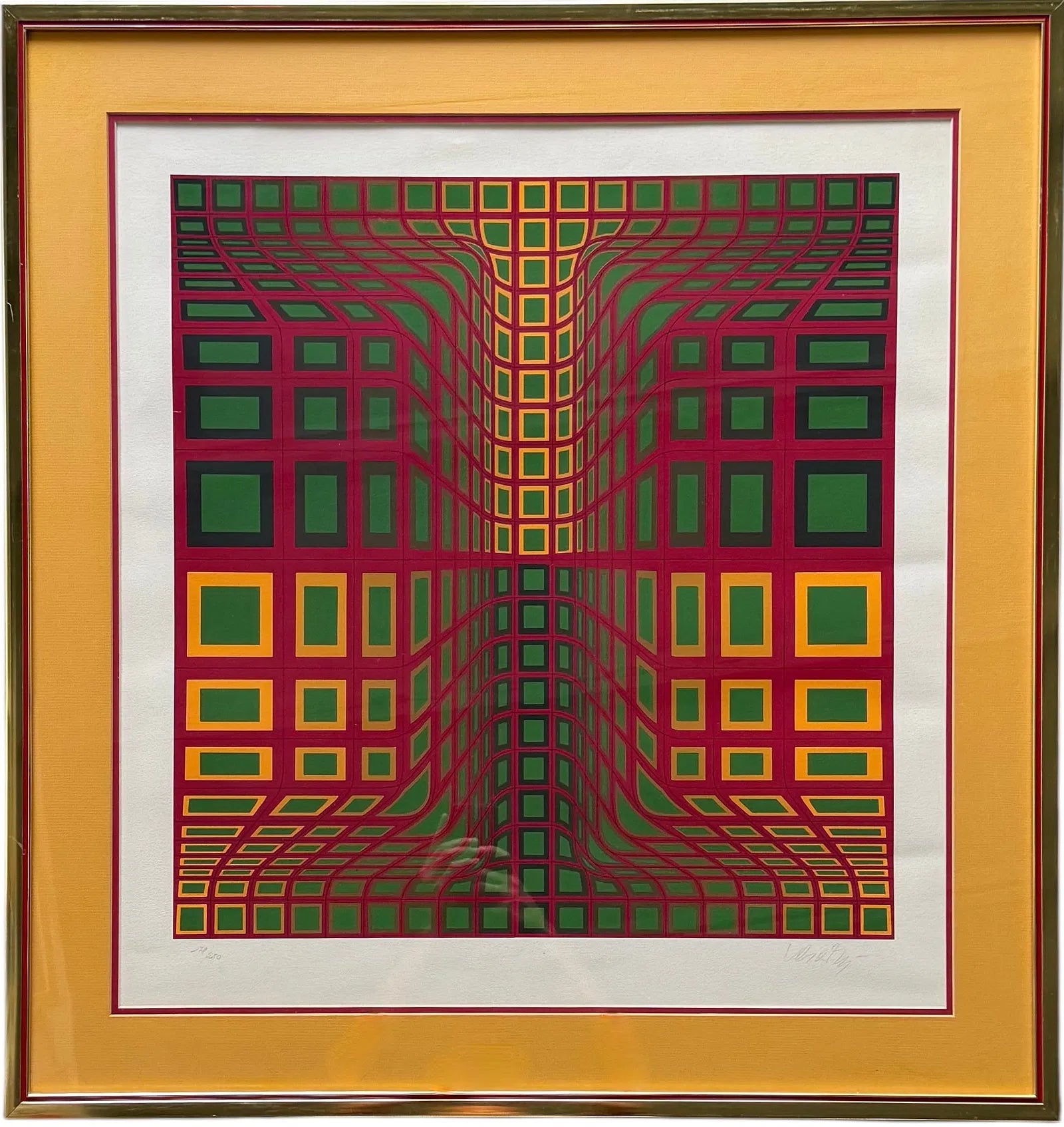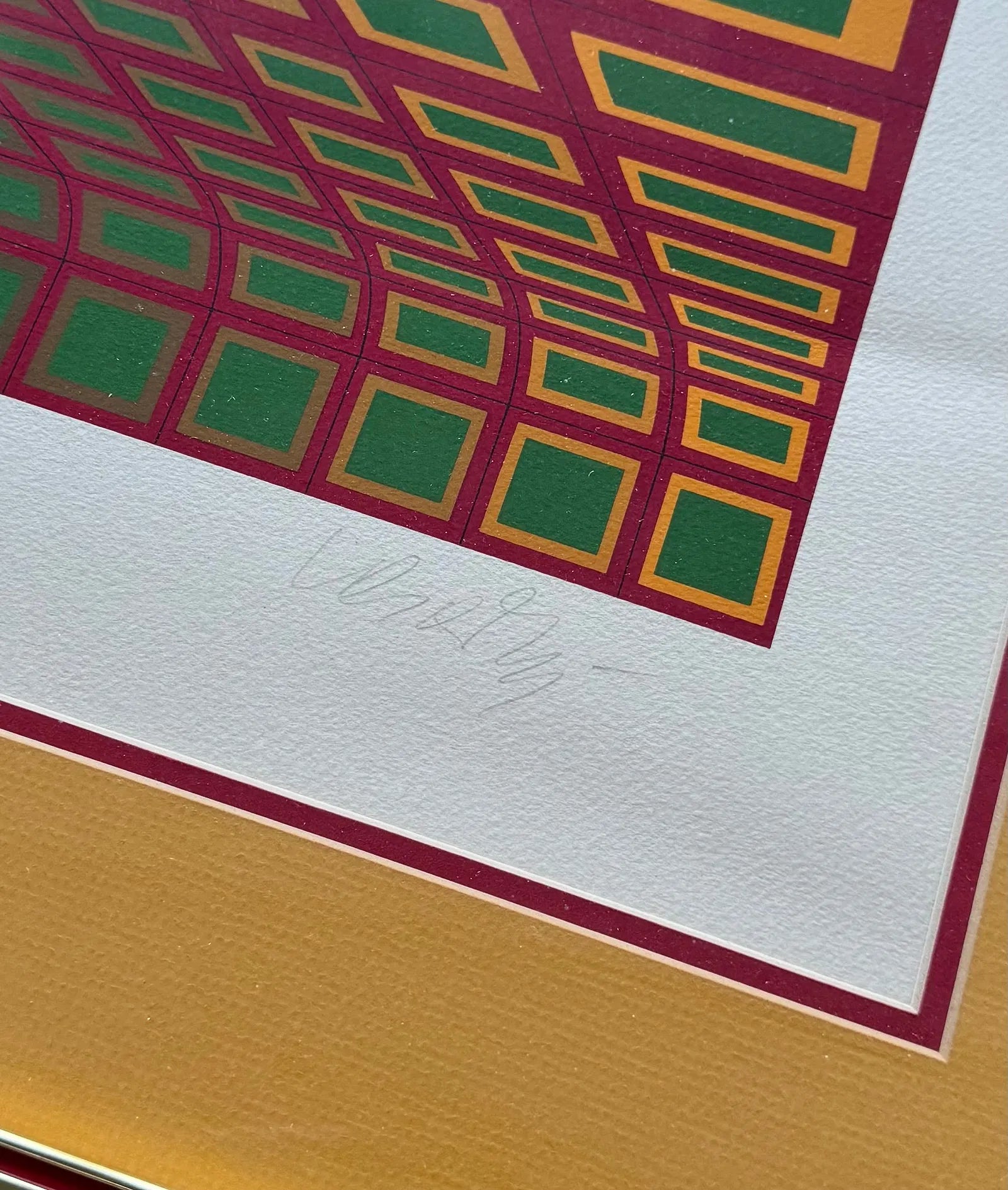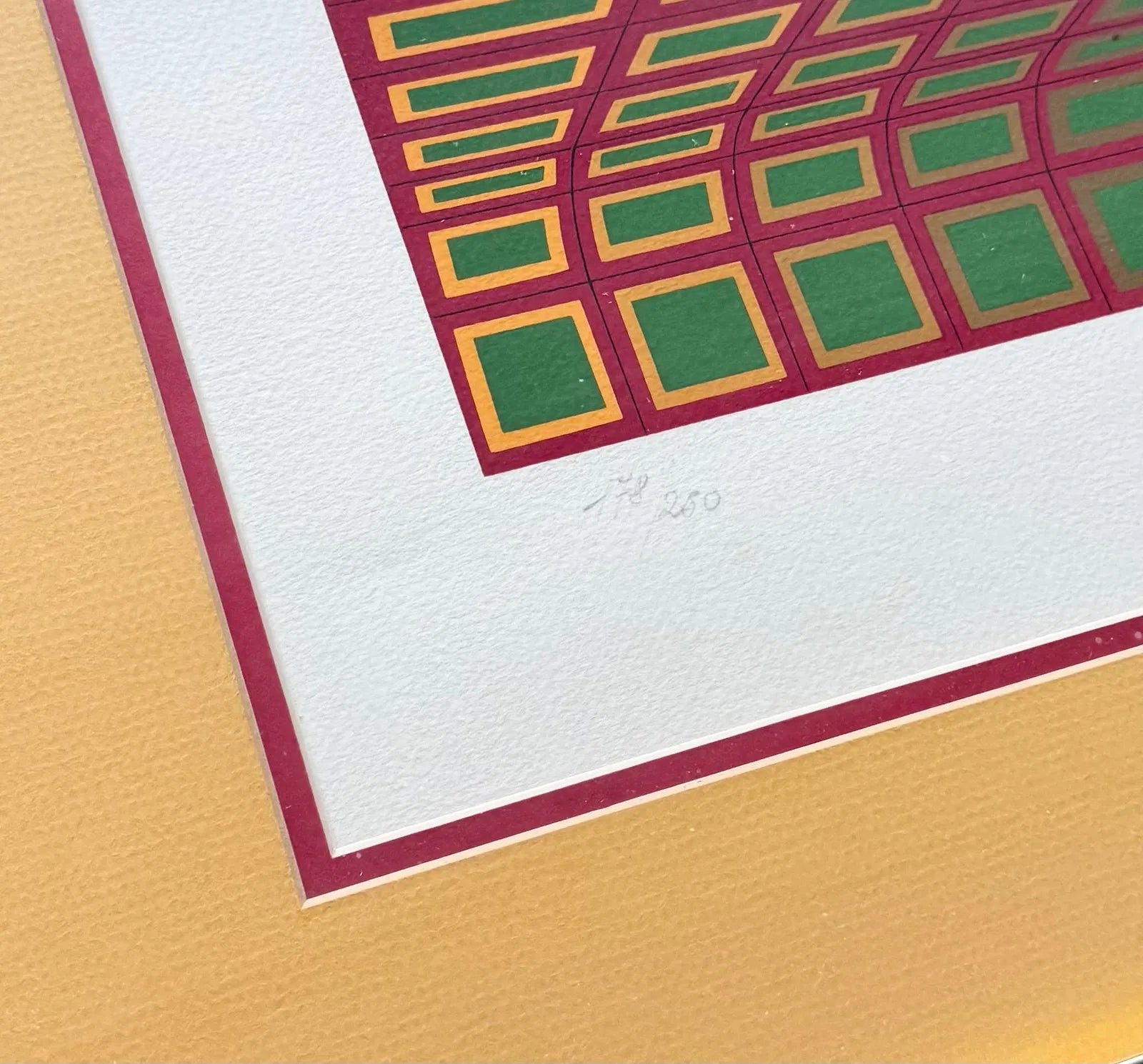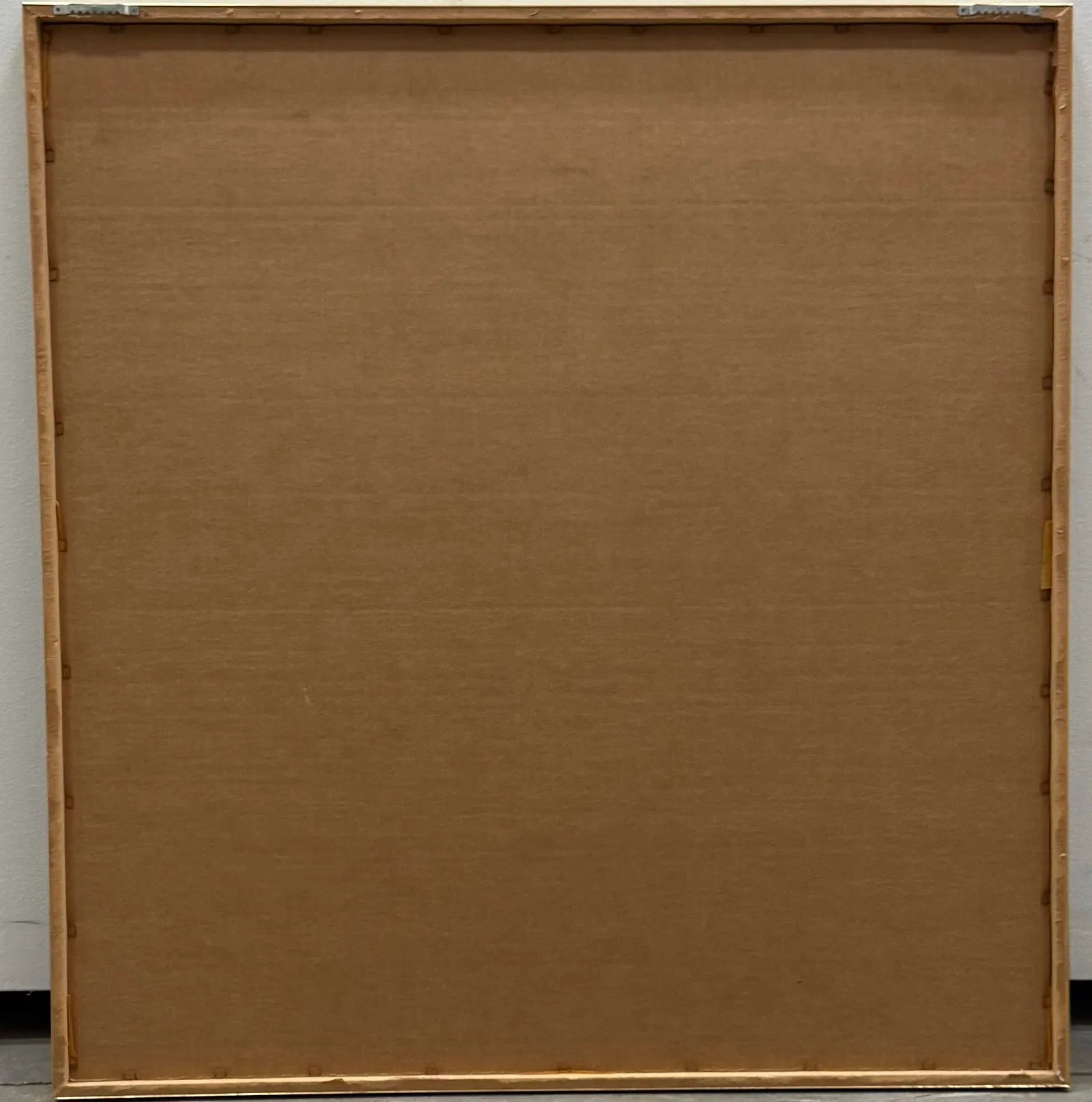



‘COMPOSITION WITH RED, YELLOW AND GREEN’ BY VICTOR VASARELY (1980)
CONTACT US HERE ABOUT THIS ITEM.
A late-career work by Hungarian-French artist VICTOR VASARELY (1906–1997), grandfather of the Op Art movement. The piece exemplifies his theory of “visual kinetics,” using a mix of vibrant colors and rigid geometric patterns to create a powerful illusion of movement and depth. The colorful squares-within-squares represent a modular "alphabet" for Vasarely, that can be systematically rearranged to produce an infinite number of compositions. He believed that such work would transcend cultural boundaries and be universally understood. The use of serigraphs reflected a related objective, allowing him to "democratize" his art—by making it accessible to and affordable for a wider audience. Signed in pencil and numbered 178/250.
VICTOR VASARELY (1906–1997) was a French-Hungarian painter, commonly regarded as a pioneering figure of the 20th century's Op Art movement. He created eye-popping geometric abstractions that play with the viewer’s perception of depth, perspective, and motion, and his innovations in color and illusion have had tremendous impact on subsequent generations of artists. His 1937 oil on canvas, Zebra, consisting of undulating black and white stripes that suggest the entire form of the titular animals, is often cited as the earliest example of an Op-Art painting.
Born as Győző Vásárhelyi in the city of Pécs in southwestern Hungary, he pursued medical studies for two years at the University of Budapest. He abandoned this path in favor of a career in the visual arts, but his scientific education had a lasting and obvious impact on his systematic methodology. In 1929, he transferred to the Muhely Academy in Budapest, known as the “Budapest Bauhaus,” where he concentrated on graphic design and typography.
In 1930, Vasarely moved to Paris, working as a graphic artist with various advertising agencies to support himself. During this formative period, he experimented with the optical effects that would ultimately define his mature style, and the graphic work he produced investigated the influences of perspective and light.
After WWII, Vasarely opened a studio near Paris and increasingly focused on his fine art. From 1944 to 1947, he explored Cubism, Expressionism, and Surrealism, but he would eventually come to see these as “Les Fausses Routes” (false roads, or “wrong tracks”). It was only when he fully committed to developing his own unique voice (from 1947 to 1951) that he hit upon his distinctive geometric abstract style, drawing inspiration from such diverse sources as the tiled walls of the Paris Metro, pebbles on a Brittany beach, and the terraced stone houses of Gordes in Provence. At the same time, he developed an interest in integrating art and architecture. He incorporated his geometric visions into large-scale works for public spaces, such as the ceramic mural he designed for the Ciudad Universitaria de Caracas in 1954.
In 1955, Vasarely wrote his influential “Yellow Manifesto” for the landmark exhibition Le Mouvement at Paris’s Galerie Denise René, wherein he laid out his theories on “visual kinetics.” He proposed that works of art could create truly dynamic experiences without themselves physically moving. His international reputation as the central figure of the Op-Art movement was solidified in 1965 by MoMA's exhibition, The Responsive Eye, in New York City. Vasarely’s geometric abstractions were a defining part of the “psychedelic” aesthetic.
During the 1960s, Vasarely developed and patented a system of interchangeable geometric shapes and colors, which he termed a “plastic alphabet,” whose units were simple variations of squares, circles, and triangles in a limited, but expandable, color palette. He used it to create his “Folklore Planetaire” series, complex optical illusions that were intended to serve as a visual language. (One early design from the series was featured on the original 1969 UK release of David Bowie's sophomore album.) In 1972, he collaborated with his son Jean-Pierre “Yvaral” Vasarely (1934–2002) to redesign the logo for the French car manufacturer Renault.
Vasarely received numerous honors during his lifetime, including the Guggenheim Prize in 1964 and, in 1976, appointment as a French Knight of the Legion of Honor. That same year, Vasarely established an eponymous foundation in Aix-en-Provence, France, to promote his legacy. Following this, museums dedicated to his artworks were opened in his hometown of Pécs (1976) and in Budapest (1987).
He died in Paris at the age of 90. Apart from his distinctive art, he played a prominent role in the democratization of art, through, on the one hand, its architectural integration, and, on the other, the mass production of prints.
Pure form and pure color can signify the world. – VICTOR VASARELY
DETAILS
Artist – VICTOR VASARELY
Period – 1980
Origin – FRANCE
Styles/Movements – OP ART; SPACE AGE
Media – SERIGRAPH
Support – PAPER
Edition – 178/250
Colors – RUBY, AVOCADO, APRICOT, DARK GREEN
Condition – Excellent vintage condition. May show minor signs of previous ownership and use.
Dimensions – 33 ¼" W × 1 ¼" D × 33 ¼" H




